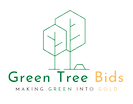Cracking the Code: Mastering the Art of Purchasing Unique Biomass with Confidence and Ease
- Mr. Jones
- Feb 3
- 4 min read
Updated: Sep 11
Finding unique products, especially biomass, can often feel overwhelming. With the right tips and techniques, however, purchasing can transform into a productive experience. This guide will equip you with the knowledge to effectively locate and buy unique biomass, while also clarifying the buying cycle.
Understanding Biomass
Biomass plays a vital role in the industry. It is primarily used for extraction, textiles, and various applications. By comprehending the properties and potential uses of biomass, you can make better purchasing decisions. Typically, biomass includes the stalks, leaves, and flowers of the plant. High-quality biomass that adheres to industry standards is essential.
In a rapidly growing market, unique biomass can provide buyers with an edge. For example, the global market, valued at $2.8 billion in 2020, is expected to expand at a compound annual growth rate (CAGR) of 21.5% from 2021 to 2028. Understanding the unique attributes of biomass will empower you to select products that fit your specific needs.
Identify Your Needs
Before entering the purchasing world, it is important to clarify your needs. Are you searching for a specific type of biomass for extraction or textiles? Defining the intended use will guide your search more effectively.
Creating a checklist of your requirements can make a huge difference. Here are some questions to consider:
What is the intended purpose of the biomass?
What quality standards do you require?
What is your budget range?
These clear answers will help narrow down your options, simplifying the buying cycle.
The Buying Cycle Explained
A solid understanding of the buying cycle can improve your purchasing strategy. The cycle encompasses several key stages:
Awareness: Understanding your need for hemp biomass.
Research: Gathering information on available types and qualities.
Evaluation: Comparing potential suppliers by quality, price, and reliability.
Decision: Selecting the supplier and completing the purchase.
Post-Purchase Evaluation: Reflecting on the buying experience and product performance.
By familiarizing yourself with these stages, you can navigate the buying process more adeptly, leading to better decisions.
Researching Suppliers
Once you have clarity on your needs, the next step is to research suppliers of unique biomass. Various platforms and resources can assist in evaluating potential vendors.
Industry Reports and Market Trends: Access reports from reputable sources to understand market trends. This helps identify suppliers known for quality in the sector.
Networking: Joining industry forums and attending trade shows can be invaluable. Engaging with peers helps you discover reliable sources for unique biomass.
Online Marketplaces: Explore platforms focused on industry products. Reviews and testimonials can provide critical insights on supplier credibility.
Thorough research allows you to gather vital information regarding quality and pricing, enabling informed decisions.
Evaluating Quality
After identifying potential suppliers, assessing the quality of their biomass is crucial. Key factors include:
Sustainability: Confirm that the biomass is sourced from environmentally friendly practices.
Testing: Reliable suppliers will offer lab testing results to verify THC levels, purity and potency profiles, and contaminant testing.
Certifications: Seek suppliers with industry certifications, indicating compliance with legal standards.
Paying close attention to these quality indicators will help you select trustworthy suppliers providing unique, reliable products.
Budgeting for Your Purchase
Establishing a budget is fundamental in any purchasing situation. In the open market, prices can vary significantly based on quality and availability.
Consider different budget ranges. For instance, high-quality biomass might range from $0.5 to $0.30 per percent, depending on its extraction processes. Sometimes investing a little more up front can yield greater long-term benefits. Analyze the total cost of ownership, encompassing shipping, testing, and post-purchase evaluations.
Having a clear budget will keep your purchasing on track and eliminate options that may exceed your financial constraints.
Completing the Purchase
When you're ready to make a purchase, ensure you:
Maintain Clear Communication: Set up a direct line of contact with your chosen supplier. Confirm all details, such as quantity, delivery, and payment methods.
Request Documentation: Ask for invoices and delivery receipts. Keeping organized records can save time and alleviate confusion should discrepancies arise.
Follow-Up: After your purchase, don’t hesitate to reach out with questions or concerns. A dependable supplier will welcome your inquiries.
Successful transactions hinge on effective communication and proper documentation.
Post-Purchase Insights
The buying cycle extends beyond the purchase itself. Reflecting on your experience is essential for future transactions. Ask yourself:
Did the product meet your expectations?
Were the suppliers responsive and helpful during the process?
Taking time to evaluate your buying cycle will offer valuable insights for your next purchase, enhancing your confidence in future decisions.
Embracing Your Purchasing Journey
Finding and buying unique biomass may seem daunting, but by understanding the buying cycle and equipping yourself with knowledge, you can approach purchasing confidently. Assess your needs, research suppliers, and follow the steps in this guide to elevate your buying experience.
Mastering the art of purchasing biomass not only strengthens your business practices but also empowers you as a buyer. With the increasing demand for industry products, being well-informed will help you stand out in this competitive landscape.

Take control of your purchasing journey today. You might just discover a unique product that transforms your operations for the better!


Comments